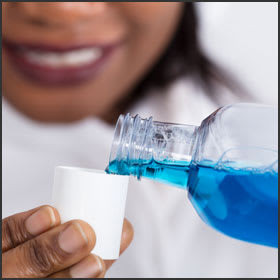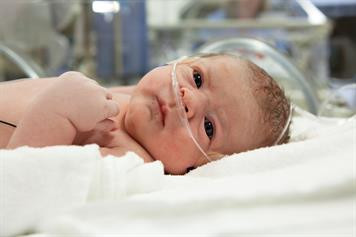Definisi
Tonsilofaringitis merupakan infeksi akut pada tenggorokan dan amandel. amandel mengandung jaringan limfoid yang merupakan bagian dari sistem pertahanan imun tubuh. Oleh karena itu, amandel dan jaringan di sekitar tenggorokan sering terinfeksi oleh kuman yang masuk ke hidung maupun tenggorokan. Tonsilofaringitis merupakan kondisi yang umum dijumpai, terutama pada anak-anak.
Penyebab
Tonsilofaringitis biasanya disebabkan oleh infeksi virus, paling sering akibat adenovirus, rhinovirus, virus influenza, coronavirus, dan respiratory syncytial virus (RSV). Beberapa kasus disebabkan oleh virus Epstein-Barr (penyebab mononukleosis), virus herpes simpleks, cytomegalovirus, dan HIV.
Pada sekitar 30% pasien, penyebab tonsilofaringitis adalah infeksi bakteri. Bakteri paling banyak menyebabkan kondisi ini adalah Group A beta-hemolytic streptococcus (GABHS). Bakteri lain yang terkadang menjadi penyebab adalah Staphylococcus aureus, Streptococcus pneumoniae, Mycoplasma pneumoniae, dan Chlamydia pneumoniae. Penyebab yang jarang adalah Bordetella pertussis (pertusis), Fusobacterium, Corynebacterium diphteriae (difteri), Treponema pallidum (sifilis), dan Neisseria gonorrhea (gonore).
Faktor Risiko
Infeksi bakteri GABHS umumnya menginfeksi anak berusia 5-15 tahun dan jarang pada anak dibawah 3 tahun. Risiko terinfeksi juga lebih tinggi pada orang tua yang memiliki anak usia sekolah dan orang dewasa yang berkontak erat dengan orang yang terinfeksi.
Orang yang tinggal atau bekerja pada pusat penitipan anak, sekolah, atau tempat penampungan juga lebih berisiko terhadap penularan infeksi.
Gejala
Nyeri tenggorokan terutama saat menelan merupakan gejala utama tonsilofaringitis. Anak kecil yang tidak dapat mengungkapkan rasa sakit tenggorokan biasanya akan menolak makan. Gejala lain yang sering ditemukan adalah:
- Demam (terutama pada infeksi bakteri GABHS, demam bisa tinggi)
- Batuk dan pilek (biasanya pada infeksi virus)
- Nafsu makan berkurang
- Kelalahan
- Nyeri kepala
- Keluhan pencernaan
- Bau mulut
- Suara teredam
- Terkadang nyeri dapat menjalar ke telinga
- amandel biasanya terlihat merah, bengkak, dan terdapat bercak-bercak putih di permukaannya
Gejala yang terutama ditemukan pada infeksi bakteri GABHS adalah:
- Demam
- Pembesaran kelenjar getah bening di leher, biasanya disertai nyeri
- Ruam badan
Infeksi GABHS biasanya sembuh dalam 7 hari. Pada orang yang sering mengalami infeksi amandel, akan terbentuk cekungan-cekungan kecil pada amandel yang biasanya terisi oleh liur yang mengeras dan berwarna putih yang menyerupai batu kecil. Batu ini akan menjadi tempat bertumbuhnya bakteri dan menyebabkan bau mulut yang tidak enak dan kronis (jangka panjang). Hal ini juga dapat membuat seseorang lebih rentan mengalami tonsillitis berulang.
Diagnosis
Diagnosis tonsilofaringitis biasanya dapat ditegakkan oleh dokter berdasarkan konsultasi dan pemeriksaan. Peradangan yang ada pada faring dan amandel dapat dengan mudah diidentifikasi oleh dokter. Namun, tidak demikian dengan penyebabnya karena hanya dengan melihat tenggorokan tidak terdapat perbedaan antara infeksi virus dan bakteri. Oleh karena itu, pada keadaan tertentu mungkin diperlukan pemeriksaan seperti kultur atau tes rapid antigen.
- Pemeriksaan ini dilakukan dengan menumbuhkan kuman yang didapatkan dari sampel tenggorokan. Kuman ditumbuhkan di media laboratorium. Pemeriksaan ini berguna untuk mengetahui kuman yang menyebabkan infeksi, terutama GABHS, sehingga dapat menentukan pengobatan yang tepat.
- Rapid antigen. Pemeriksaan ini dilakukan dengan cara swab tenggorokan dan memasukkan sampel ke reagen untuk mengetahui apakah ada infeksi GABHS.
Oleh karena infeksi GABHS membutuhkan terapi dengan antibiotik, maka diagnosanya harus cepat. Banyak institusi yang merekomendasikan pemeriksaan rapid antigen atau kultur pada semua anak dengan gejala tonsilofaringitis. Pemeriksaan orang dewasa juga bisa dilakukan bila terdapat gejala seperti adanya bercak putih di amandel, pembesaran kelenjar getah bening di leher, demam, dan tidak disertai batuk. Perlu tidaknya dilakukan pemeriksaan penunjang memang masih kontroversial. Dokter akan mempertimbangkan apakah anak Anda atau Anda perlu menjalani tes.
Tata Laksana
Terapi tonsilofaringitis terdiri dari terapi untuk mengatasi gejala dan penyebab. Terapi untuk gejala adalah:
- Obat anti nyeri untuk mengurangi nyeri tenggorokan. Obat yang dipakai adalah parasetamol atau obat antiinflamasi non steroid (OAINS), biasanya efektif dalam mengatasi nyeri.
- Obat hisap atau semprot tenggorokan yang mengandung benzokain, fenol, atau lidokain dapat digunakan untuk mengurangi nyeri meskipun tidak seefektif OAINS.
- Kortikosteroid jangka pendek untuk membantu mempercepat proses penyembuhan
- Kumur dengan air garam hangat dapat dilakukan, namun tidak ada penelitian yang menunjukan bahwa cara ini membantu mengurangi gejala
Penyebab tonsilofaringitis juga harus diobati. Jika penyebabnya adalah bakteri grup A-beta hemolytic streptococcus, maka antibiotik perlu diberikan. Dokter akan menentukan pilihan obat dan dosis yang diperlukan. Setelah pengobatan, pemeriksaan laboratorium ulang tidak diperlukan.
Operasi pengangkatan amandel biasanya dipertimbangkan jika tonsillitis terjadi berulang, dan biasanya dilakukan pada anak-anak. Kriteria berulangnya yaitu:
- Lebih dari 6 kali per tahun
- Lebih dari 4 kali per tahun selama 2 tahun
- Lebih dari 3 kali per tahun selama 3 tahun
Selain itu, pada anak-anak, operasi juga dipertimbangkan pada:
- Infeksi berat dan menetap meskipun sudah diberikan antibiotik
- Gangguan tidur akibat sumbatan saluran nafas oleh amandel yang membesar
- Abses peritonsil berulang.
- Kecurigaan kanker
Pada orang dewasa, dokter biasanya tidak menggunakan kriteria di atas untuk operasi. Dokter mungkin akan merekomendasikan operasi pada orang dewasa yang memiliki bau mulut dan batu amandel.
Keputusan untuk operasi pengangkatan amandel akan dipertimbangkan oleh dokter dengan melihat faktor usia, faktor risiko, dan respon terhadap infeksi berulang dari setiap orang. Namun, orang yang sudah menjalani pengangkatan amandel tetap dapat mengalami infeksi tenggorokan atau faringitis.
Perdarahan pasca operasi yang signifikan hanya tejradi pada kurang dari 2% orang, biasanya dalam 24 jam atau 7 hari setelah operasi. Jika Anda mengalami pendarahan setelah operasi, maka Anda sebaiknya mengunjungi fasilitas kesehatan.
Komplikasi
Infeksi yang tidak diobati, terutama yang disebabkan oleh bakteri, dapat menimbulkan komplikasi seperti:
- Abses peritonsil yaitu kumpulan nanah yang ada di sekitar amandel. Abses yang besar dapat mengganggu saluran nafas dan menyebabkan kesulitan bernafas.
- Demam rematik, yang dapat menyebabkan penyakit jantung rematik yang dapat merusak katup jantung
- Glomerulonefritis (peradangan pada ginjal)
Pencegahan
Untuk mencegah tonsilofaringitis, hal yang dapat Anda lakukan adalah:
- Mencuci tangan dengan sering, terutama sebelum menyentuh hidung dan mulut
- Menghindari berbagi makanan, minuman, atau alat makan dengan orang yang sedang sakit
- Mengganti sikat gigi secara berkala
Kapan Harus ke Dokter?
Anda harus berkonsultasi ke dokter jika Anda mengalami:
- Nyeri tenggorokan lebih dari 2 hari
- Demam lebih dari 38.3 derajat celcius
- Sulit atau nyeri menelan
- Sulit bernafas
- Pembengkakan amandel yang nyeri
Mau tahu informasi seputar penyakit lainnya, cek di sini ya!
- dr Anita Larasati Priyono
Tonsillopharyngitis - Ear, Nose, and Throat Disorders - MSD Manual Professional Edition. MSD Manual Professional Edition. (2022). Retrieved 8 March 2022, from https://www.msdmanuals.com/professional/ear,-nose,-and-throat-disorders/oral-and-pharyngeal-disorders/tonsillopharyngitis.
Tonsillopharyngitis - Acute Signs And Symptoms | MIMS Malaysia. Specialty.mims.com. (2022). Retrieved 8 March 2022, from https://specialty.mims.com/tonsillopharyngitis%20-%20acute/signs%20and%20symptoms.
Tonsillitis: Symptoms, Causes, Treatments. Cleveland Clinic. (2022). Retrieved 8 March 2022, from https://my.clevelandclinic.org/health/diseases/21146-tonsillitis.











